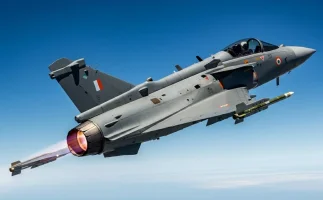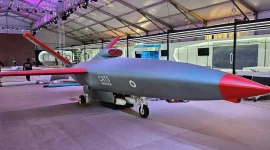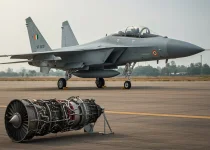- Views: 2K
- Replies: 13
A top Indian defence official has called for the accelerated development of India's indigenous long-range air defence and anti-stealth radar systems to counter the growing threat from advanced fifth-generation fighter jets, such as China’s J-20, deployed along the border.
Speaking at a defence conclave on June 28, Air Marshal Ashutosh Dixit, Chief of Integrated Defence Staff, stressed the strategic necessity of enhancing India's air defence shield.
He warned that the ability to detect and engage stealth aircraft at long distances is crucial for maintaining air superiority in a technologically advanced battlefield.
The call to action follows a period of heightened regional tensions, including the recent military engagements with Pakistan, which highlighted the challenges posed by modern aerial threats.
Fifth-generation aircraft, like China's Chengdu J-20, are defined by their ability to operate with a very low radar cross-section, making them difficult for conventional radar systems to track.
These jets combine stealth with advanced sensors and high-speed, long-range capabilities, giving them a significant "first look, first kill" advantage in combat.
The deployment of these aircraft by China near the Indian border and the potential for similar technology to be acquired by Pakistan has created a new sense of urgency for India's defence planners.
"The side that sees first, sees farthest, and sees most accurately prevails," Air Marshal Dixit stated, referencing the lessons learned from recent military confrontations. He noted that to effectively neutralise these advanced threats, India must invest in cutting-edge systems capable of seeing through their stealth.
India currently operates a sophisticated, multi-layered air defence network, centrally managed by the indigenously developed Integrated Air Command and Control System (IACCS).
This network, which proved effective during Operation Sindoor, combines various sensor and weapon systems, including:
- S-400 'Triumf': A long-range Russian surface-to-air missile (SAM) system, known in Indian service as 'Sudarshan Chakra', capable of engaging targets up to 400 km away.
- MR-SAM: A medium-range SAM, jointly developed with Israel, which provides air defence at ranges of up to 100 km.
- Akash and Akash-NG: Indigenous short-to-medium range missile systems designed to counter aircraft, drones, and cruise missiles.
- Arudhra Radar: A locally developed medium-power radar capable of detecting targets with small radar signatures.
The cornerstone of India's future air defence strategy is Project Kusha. This indigenous long-range air defence system is being developed by the Defence Research and Development Organisation (DRDO) and is envisioned as an equivalent to the Russian S-400 system.
Project Kusha will feature three different types of interceptor missiles with ranges of 150 km, 250 km, and 350 km, creating a layered defence against stealth aircraft, drones, and even hypersonic missiles. The system, which aims for deployment by 2028-29, is a major step towards self-reliance under the 'Atmanirbhar Bharat' initiative.
Alongside Project Kusha, Air Marshal Dixit emphasized the critical need for developing specialised anti-stealth radars.
Stealth aircraft are primarily designed to evade high-frequency radars (like X-band). However, they are more susceptible to detection by lower-frequency Very High Frequency (VHF) and Ultra High Frequency (UHF) radars.
While these low-frequency radars can detect stealthy objects, they traditionally lack the precision for targeting.
The strategy, therefore, involves integrating advanced VHF/UHF radars for early detection with other high-frequency systems to create a comprehensive and accurate air picture.
The development of new technologies, such as passive and quantum radars that do not emit detectable signals, is also being explored to create a truly formidable air defence shield for the nation.



